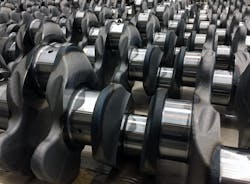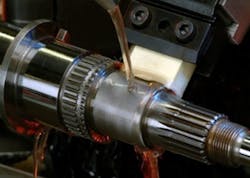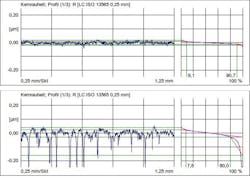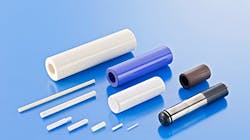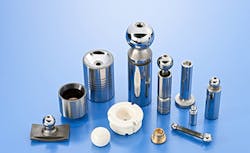Dealing with the Demand for ‘Superfinishing’
Machine shops and machine builders sense it, even if it’s never been officially defined: there is a new standard for surface quality on finished parts, whether that quality is intended to reduce friction in mechanical or industrial applications, or to improve hygiene in parts used for medical or surgical parts or food processing systems.
With surface quality of components is in the spotlight, “superfinishing” technologies have grown in significance too. Nagel Maschinen- und Werkzeugfabrik GmbH, a designer and builder of honing machines and tools, as well as a contract manufacturer, has responded to the superfinishing trend by increasing its capabilities in both directions.
Growing demand for high-quality surface finishes has far-reaching consequences for other companies too: process chains become longer due to superfinishing requirements, existing capacities no longer suffice, and expansion inevitably incurs capital costs. In that sense, for many of these companies, contract manufacturing has become a viable alternative.
“Contract manufacturing in the area of superfinishing has been growing for years now, for us,” according to Marcel Bosch, who heads Superfinishing Process Development at Nagel in Nürtingen, Germany. “That is why we have expanded our capacities in process development, as well as our machinery.
“We are equipped for all applications, from the smallest rolling elements all the way through to large crankshafts for commercial vehicles. We also are always open to new materials and workpieces, as well as any quantity standard desired by customers.”
Contract manufacturing at Nagel may mean a single item (e.g., prototypes, samples) or it may involve series production of several thousand items. If needed, two-shift operation is possible.
Automotive market applications have always been the most heavily represented at Nagel. However, the superfinishing specialists also are discovering that sectors like bearing manufacturing, aerospace, and medical technology are growing. In medical technology, the main focus is high-precision surfaces for surgical implants. Here, a complete lack of grooves is critical so that germs have no way of establishing themselves.
In vehicle technology, the demand is for a minimization of CO2 emissions, which requires tribological (i.e., friction-optimized) surfaces for the cylinder linings, which are honed; but also for all bearings for crankshafts, camshafts, and gear shafts. The magnitude of emission reductions that may be achieved may be minute, but small amounts add up over the entire vehicle. So, if the objective is to reduce friction losses as far as is technologically possible, superfinishing becomes an essential technology. Upstream grinding cannot possibly contribute further to this objective.
“The quality and design of surfaces for bearings is frequently a question of manufacturing philosophy,” according to Bosch. “Some manufacturers tend to produce reflective surfaces, such as in medical technology, while others produce defined microstructures.”
The microstructural profile on a part’s surface will support (or, minimize) the possible formation of a lubrication film. In order to reduce friction or degradation during the performance of a bearing, the process of "plateau finishing" process becomes more significant.
During plateau finishing, the peaks of a rough profile are burnished to plateaus. If the peaks remained, they would be stripped relatively quickly during operation and the result would be the typical bearing wear-and-tear. This is a problem in the event of frequent start/stop cycles in particular. Plateau finishing basically preempts the process of “running in,” and plateau structures are the perfect example of tribological surfaces.
Getting those results required a highly concentrated process development program at Nagel. “We don’t simply supply machines and tools; we also develop the processes,” Bosch emphasized.
Rz values of around 0.5 µm must be achieved. The task becomes even more challenging if certain requirements with regard to dimensional accuracy are added to the mix. One example is spherical bearings, for which Nagel has developed the dFlex band finishing tool.
“We do not yet know what kind of challenges the future of superfinishing holds, but we do know that the demand for high-quality surfaces, tailored to their function, is growing continuously. All we can do is organize ourselves as flexibly as possible,” Bosch concluded.
The superfinishing expert brings up another interesting aspect in this context: in-house abrasive development. Having the development skills for machines, tools, and cutting media in one place is a unique characteristic in superfinishing. “This circumstance enables us to react promptly to future developments or special customer requests.”
